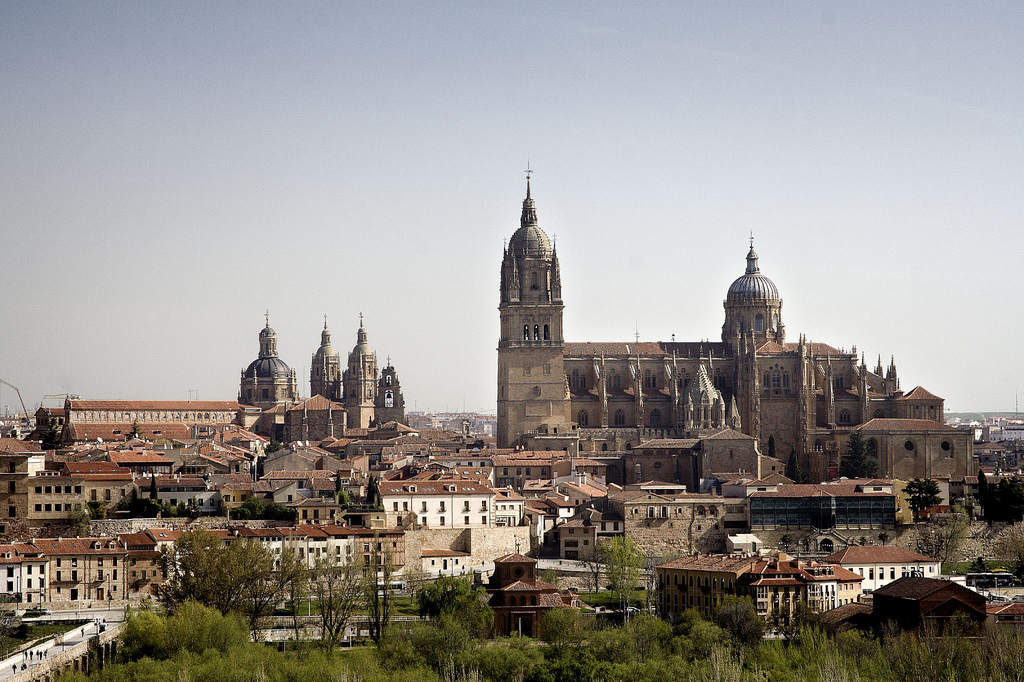
A view of Salamanca taken by Alejandro Flores from Sevilla, Spain, licensed under the Creative Commons Attribution 2.0 Generic license.
Fernando Caracena
After delivering invited talks at the Asamblea Hispano-Portugues in Aguadulce, Almeria in Spain, I gave an invited talk at the University of Madrid. Dr. Emiliano Hernandez Martin, who chaired Department of Atmospheric Physics, invited me on an excursion to his home town, Salamanca, on the weekend. This famous university city was one of the university towns where the Renaissance began. Don Emiliano knows quite a few people in Salamanca and we met some of them as we walked about town. We met professors from the University of Salamanca. We found a group of his friends gathered at a bar watching the football games (soccer) and chatting. Among them was the former assistant mayor of Salamanca, Jorge Sanchez Olivera.

Fig. 2. Emiliano and his friend, Jorge Sanchez Olivera, who as former assistant mayor of Salamanca was largely responsible for closing off many of the streets in the city center, converting them to pedestrian malls.
Salamanca is the home of the famous conquistador, Don Francisco Vasques de Coronado, who explored the desert Southwest of the United States in the early 1500s. His second in command was Lope de Samaniego, who is probably an ancestor of mine. Samaniego is my mother's maiden name.
We visited Emiliano's sister's, where her family was gathered with friends celebrating her birthday. One of the decorations in her living room was a pair of dolls dressed in what looked like charro costumes. I asked about these dolls. It turns out that the Salamanca area is the home of the original Charros. I examined the Spanish Charro costume modelled by the small dolls. It resembled the older Mexican Charro costume in many ways - tight-fitting, black with white filigree patterns. The Spanish Charro hat however, had a more conical shape than the Mexican, but it is also broad-brimmed.
The charros of Salamanca were an old ethnic group. Emiliano's family said that they would consider themselves charros. I remember my high school English teacher used to use the quote that there is nothing new under the sun. Now I see that the charros of Mexico are but a continuation of a tradition that originated in Spain, specifically in the Salamanca area.
Although Salamanca has an ancient history, it is a modern town. Like many of the Spanish cities, it is charming, compact, dense, and full of people strolling through the streets. Some of the farmers in neighboring towns have a piso (flat) in the city in addition to their village home. On weekends they go to their city homes, from which they go out to take part in the fiesta that is Spain.
Revised 10 September 2016.




